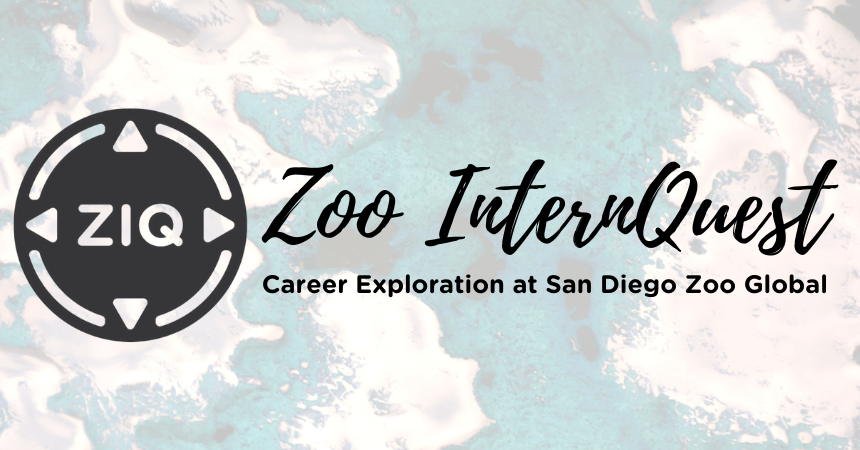Zoo InternQuest is a seven-week career exploration program for San Diego County high school juniors and seniors. Students have the unique opportunity to meet professionals working for the San Diego Zoo, Safari Park, and Institute for Conservation Research, to learn about their jobs, and then blog about their experience online. Follow their adventures here on the Zoo’s website!
As Yogi Berra once said, you can observe a lot by just watching. Although most people see this as a silly truism, it is the daily life of many Wildlife Researchers at the San Diego Zoo. They spend countless hours studying animals, observing their actions and behavior. Studying these animals is not only important so that the animals can live their healthiest life here at the Zoo, but also for wildlife conservation.
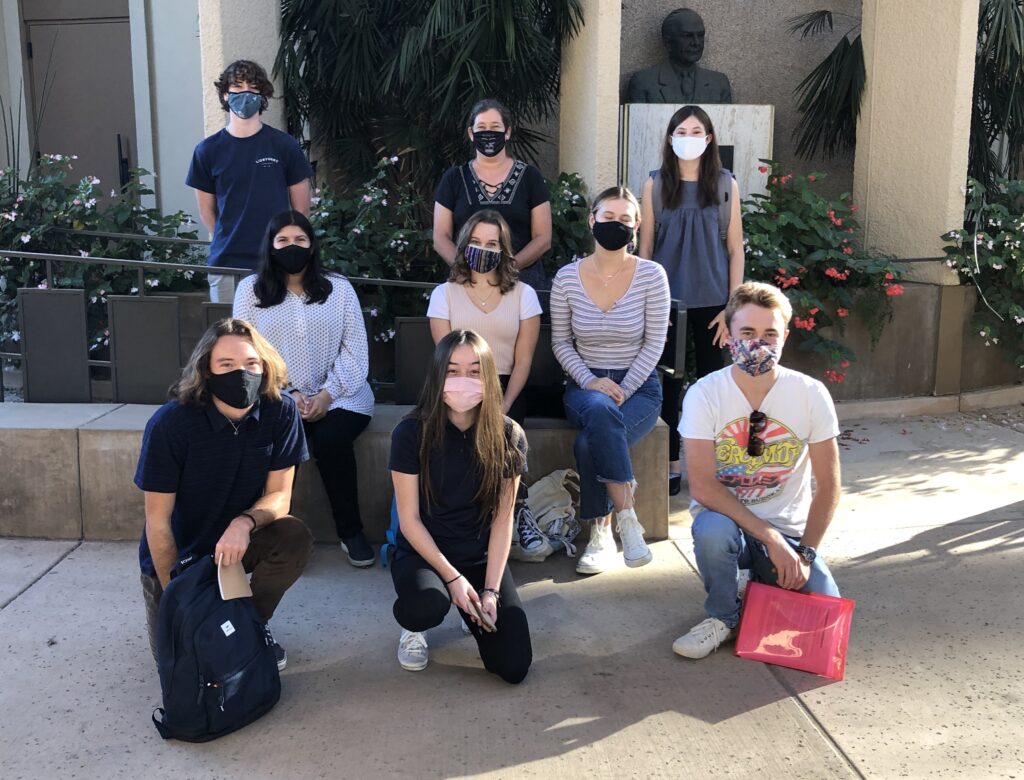
Jennifer Tobey is a Researcher at San Diego Zoo Global. She is dedicated to bettering the world around her by studying animal behavior, both at the zoo and in the wild, and contributing to the preservation of different species with her research. She works at the San Diego Zoo’s Institute for Conservation Research (ICR) alongside 150 other researchers. She attended Franklin & Marshall College for her undergraduate degree in biology and psychology with an emphasis on behavior, and she minored in anthropology. She then received her master’s in psychology with an emphasis in comparative psychology from California State San Marcos. Before Ms. Tobey began her professional journey with San Diego Zoo Global, she volunteered and worked at several wildlife care centers and museums, ultimately realizing her passion was in behavior analysis.
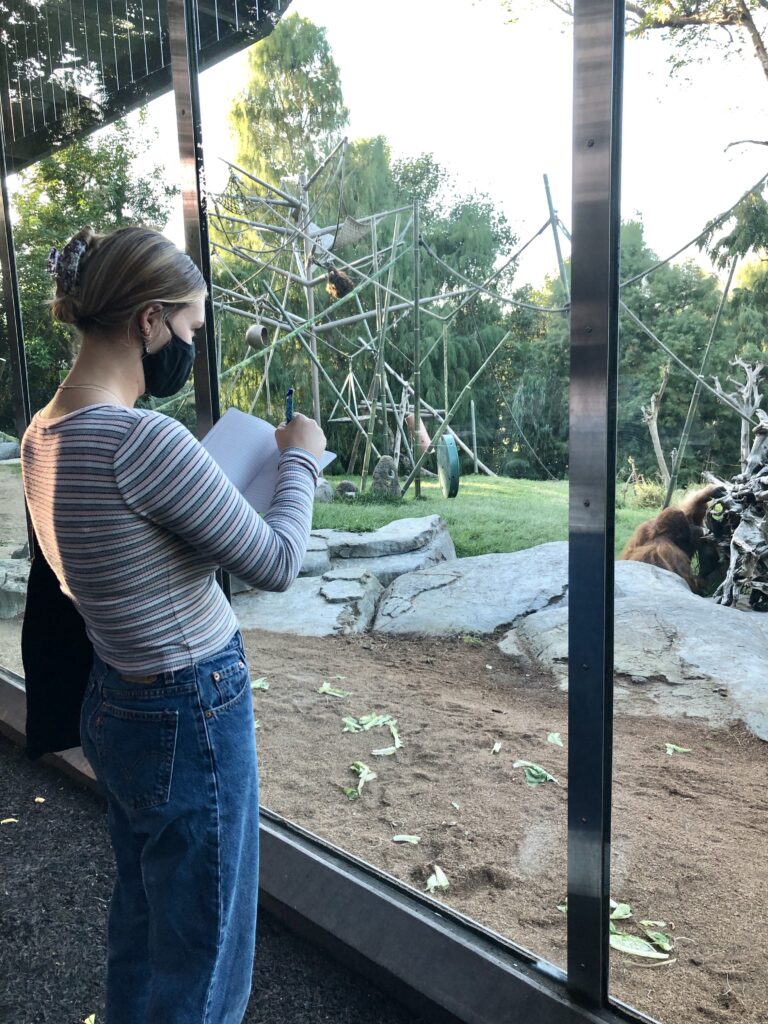
Ms. Tobey spends a lot of time working hand-in-hand with other researchers and conservationists in the field. Her job revolves around gathering information about wildlife populations, their behavior, threats to their habitats, and how the ever-changing environment affects species. She investigates many of the different ways that humans and wildlife interact with each other, both positive and negative. Ms. Tobey has spent over 20 years in her field, working with all types of species. Primates and marsupials have been her favorite, and she has spent a significant amount of time studying koalas.
Koalas are considered one of the most inactive animals, spending about 18-22 hours a day sleeping. They hail from Australia and are found within a span of 3,000 sq km in various locations, like the Blue Mountains, St. Bees Island, and Cape Otway. These herbivorous marsupials are generally hard to spot, but are found on the tops of giant eucalyptus trees, sleeping more than 75% of the day. When they are not sleeping they are munching on the eucalyptus leaves. The reason they sleep so much is because the eucalyptus leaves are highly toxic; koalas have special digestive adaptations to break down the toxins, and this digestion requires a lot of energy. With their sharp claws, powerful grip, and strong thigh muscles, they can easily climb up trees and sit there for hours at a time. Koalas have thick wool fur that protects them from both high and low temperatures and acts like a raincoat to repel water. As of today, koalas are considered threatened. Although they don’t have many natural predators, habit loss from fires and increasing human encroachment contribute to their population decline.
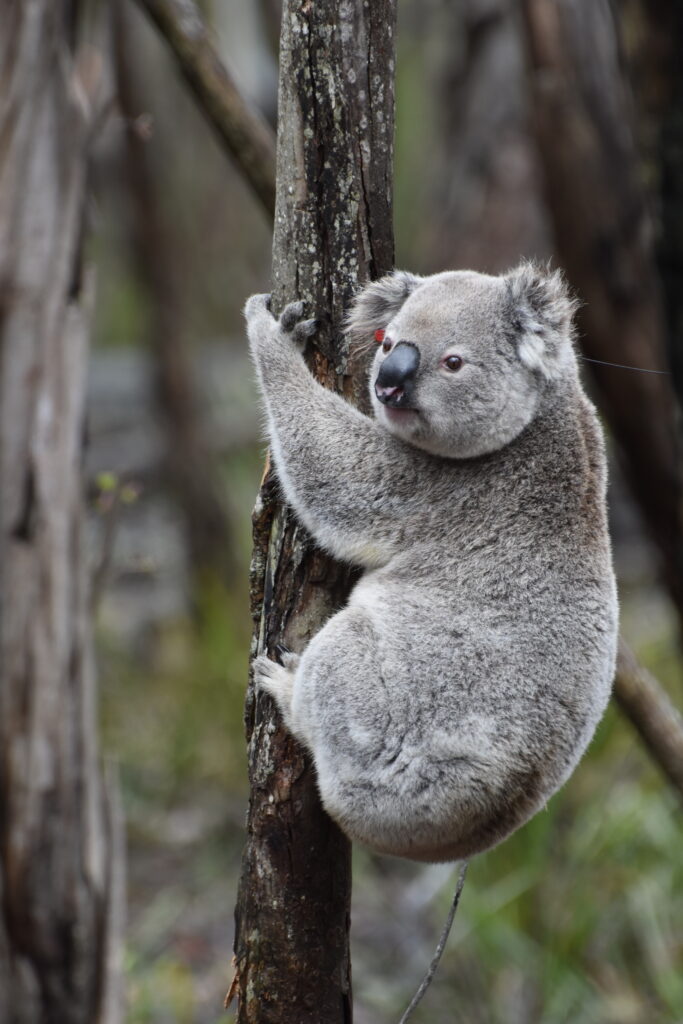
The koala population in the Australian Blue Mountains has been threatened by wildfires recently, and Ms. Tobey was tasked with monitoring the various koala populations that inhabit that area. Ms. Tobey and a group of researchers worked to utilize radio tracking devices for the purpose of analyzing the species’ geographical patterns. Doing so allowed researchers like her to keep track of the koalas’ population count in certain areas. Not only could experts in the field help contribute to these conservation efforts, but so could local communities living in the area. By refilling the water troughs installed on eucalyptus trees, the locals were able to help the koalas dealing with the after-effects of the wildfires in Australia.
Just as the local community was there to help, so can you! To find out more about exciting opportunities in which you can be a hero for wildlife, Ms. Tobey suggests visiting the zooniverse.org website where you can identify and learn about species through various projects. These projects collect data using trail cameras that allow people like you to look at photos and videos of the animals in their natural habitats and identify the species and their behavior using a provided “cheat sheet.” People as young as 5-years-old can do this, and it is a tremendous help to researchers since they have thousands of photos to identify. Participating in the effort to conserve wildlife starts at any age, so it’s never too early or too late to provide a helping hand.
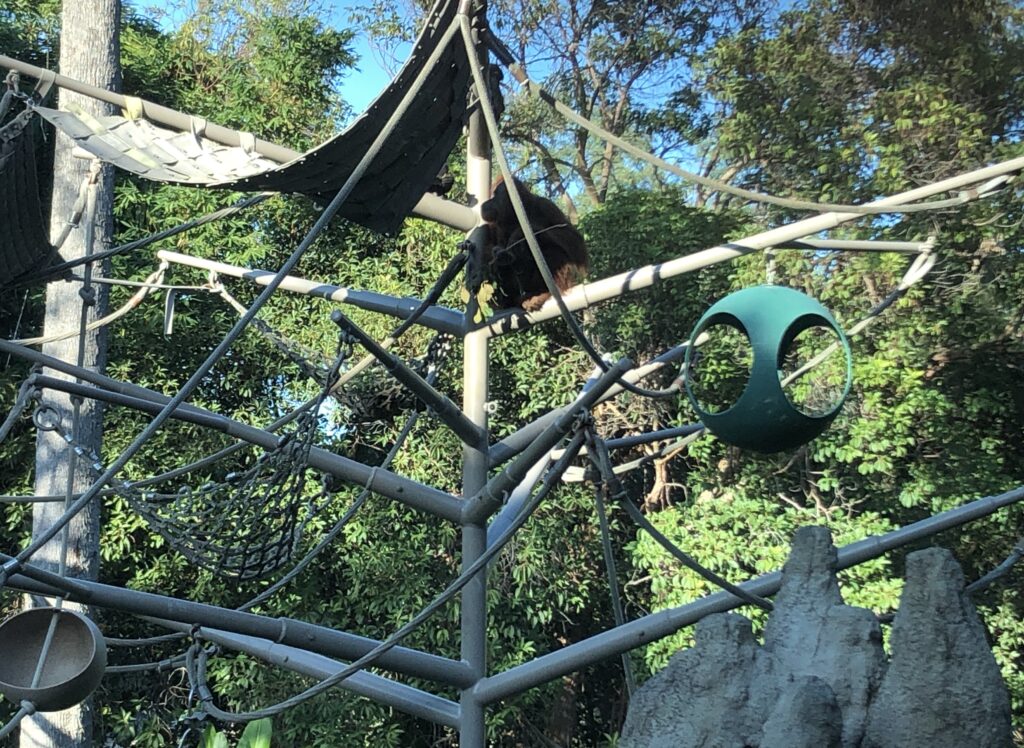
On top of studying the behaviors of koalas in the wild, there is no denying that the favorite aspect of Ms. Tobey’s career so far has been her time spent on-site at the San Diego Zoo. She valued the observational aspect of being in the field, but the work mainly revolved around the use of trail cameras and counting individuals. Ms. Tobey loves the more face-to-face, behavior oriented approach offered to her as a researcher on-site at the Zoo. “The animals are a lot easier to count here than on cameras,” she joked. Being in such close proximity to the animals that she studies creates a more personal connection. Ms. Tobey has a very palpable fascination for keying into an animal’s individual quirks and social tendencies, digging into the root of their behaviors to understand why they do what they do. If she could relive any particular moment or project from her career, she says it would be working with the Alaskan brown bears as a Wildlife Care Specialist early in her Zoo career. She excitedly explained that while working under the protocol of protected contact she was able to perform physical check-ups on the bears, examining their paws while feeding them grapes. In terms of her favorite types of animals to work with, Ms. Tobey is particularly fond of ones that have intricate social dynamics and attitude, such as primates!
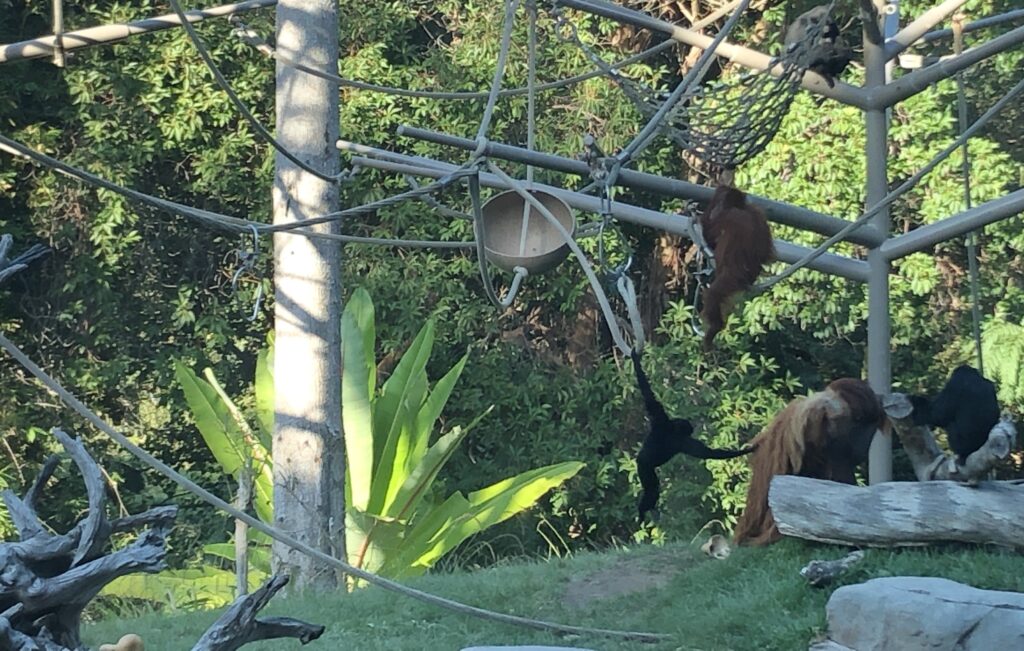
For students interested in pursuing a profession similar to hers, Ms. Tobey recommends getting as much hands-on experience as possible. One interesting thing she mentioned was that unpaid and volunteer opportunities are helpful and should be listed on resumes because they depict dedication and an interest in the subject. She advises that students who are interested in the research field should check out the American Association of Zoos and Aquariums’ website and job listings to gain relevant experience. There is also the Animal Behavior Society which lists internships and job opportunities. Furthermore, many large universities have research programs and are looking for assistants. Her overall advice to those interested in a career similar to hers is to gain as many skills and as much experience as possible. While a degree like hers is helpful in the field, developing applicable skills through relevant volunteer positions and jobs is oftentimes more important.
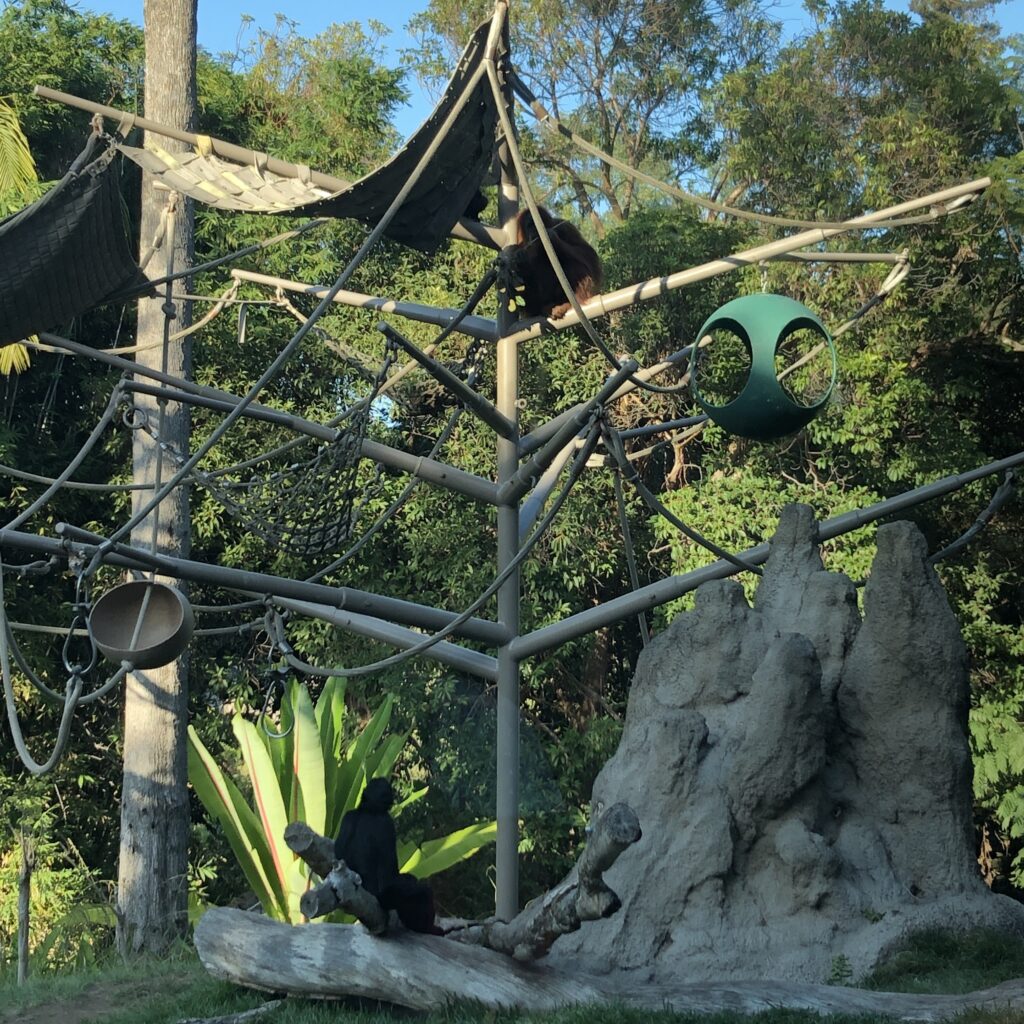
There is no such thing as a typical work day for a researcher like Ms. Tobey. From traveling to Australia for koala tracking to studying orangutan behavior at the Zoo, no matter where she is working, Ms. Tobey’s work plays an essential role for animal welfare and wildlife conservation.
Week Four
Fall Session 2020

